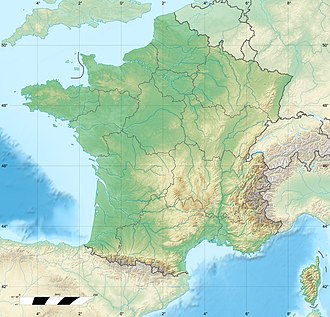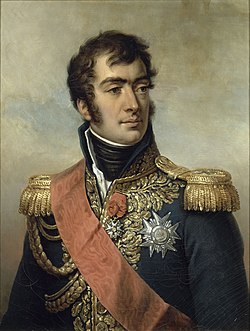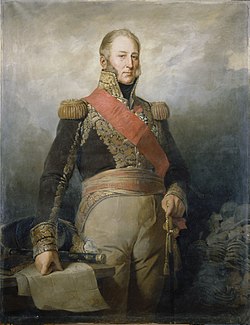| Battle of Gué-à-Tresmes | |||||||
|---|---|---|---|---|---|---|---|
| Part of the Campaign of France of the Sixth Coalition | |||||||
 Kleist's Prussians may have witnessed a scene like this as the 2nd Old Guard Division advanced toward them. Photo is from a reenactment of the Battle of Waterloo. | |||||||
| |||||||
| Belligerents | |||||||
| | | ||||||
| Commanders and leaders | |||||||
| | | ||||||
| Strength | |||||||
| 10,000–14,000 | 12,000 | ||||||
| Casualties and losses | |||||||
| 250 killed, wounded, or captured | Prussia: 945–1,035 killed, wounded, or captured Russia: 400 killed, wounded, or captured Total casualties: 1,345–1,435 killed, wounded, or captured | ||||||
Location within France | |||||||
The Battle of Gué-à-Tresmes (28 February–1 March 1814) was fought between 14,500 French troops, including the Imperial Old Guard, led by Marshals Auguste de Marmont and Édouard Mortier, and 12,000 Prussians commanded by Friedrich Graf Kleist von Nollendorf and Friedrich von Katzler. On 28 February the French attacked and drove the Prussians to the north along the west bank of the river Ourcq. That evening and the next day Kleist tried to push the French back while Russian units under Peter Mikhailovich Kaptzevich tried to cross from the east to the west bank of the Ourcq; the Allies were unsuccessful. Gué-à-Tresmes (Tresmes Ford) is located where Route D405 crosses the Thérouanne stream about 10 kilometres (6.2 mi) northeast of Meaux.
Contents
- Background
- Schwarzenberg retreats
- Blücher's offensive
- Battle
- 28 February action
- 1 March action
- Result
- Forces
- French order of battle
- Allied order of battle
- Notes
- References
- Further reading
- External links
In late February, Field Marshal Gebhard Leberecht von Blücher's Allied Army of Silesia advanced west toward Paris, pressing a badly outnumbered French force before it. When Kleist's Prussian II Corps took a menacing position on the north bank of the river Marne near Meaux, the French attacked and pushed their adversaries back. When he learned that Napoleon's army was fast approaching from the southeast, Blücher abandoned the effort to force a way past Marmont and Mortier and began retreating to the north. The action occurred during the Campaign in north-east France, part of the War of the Sixth Coalition.






